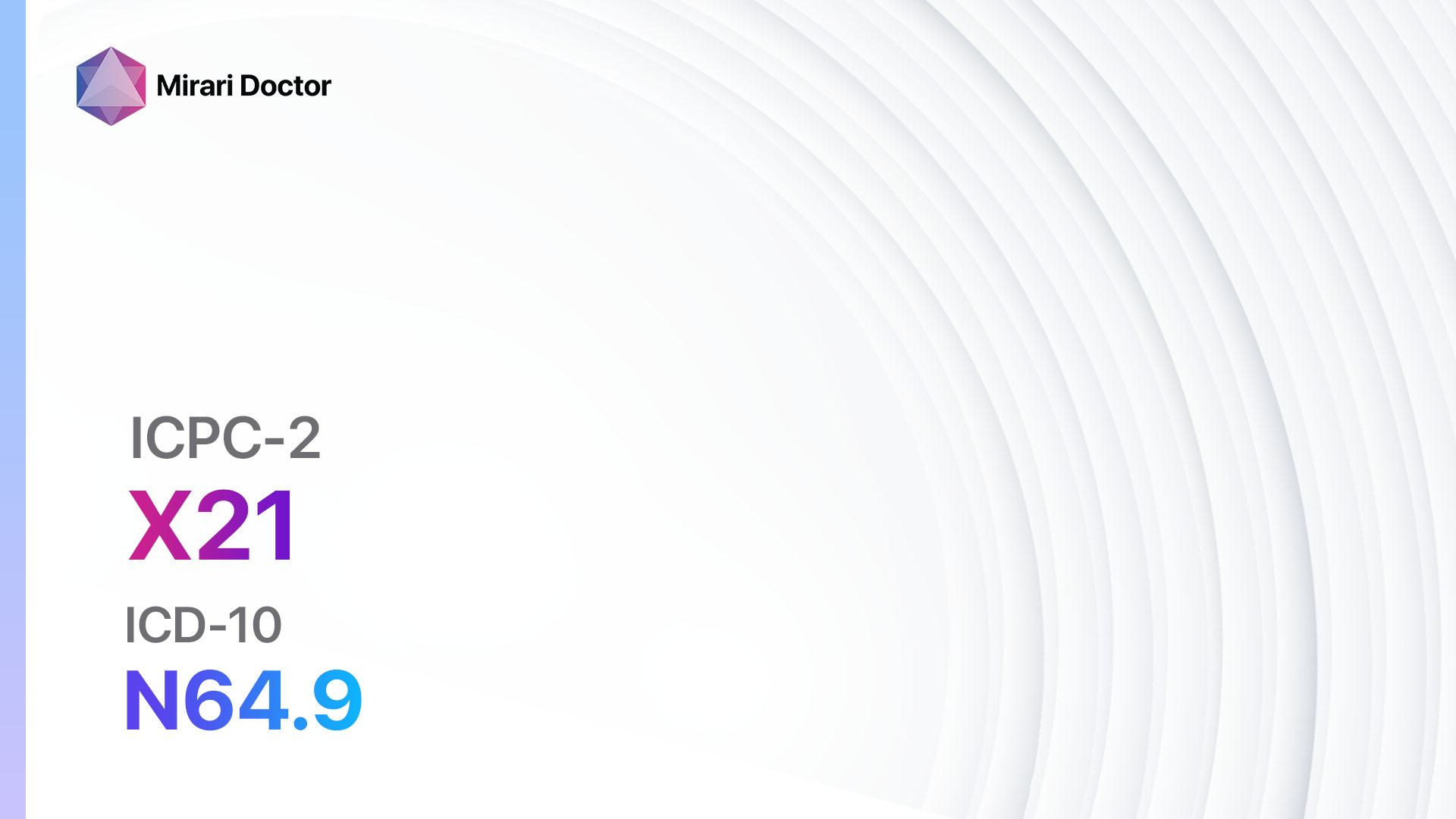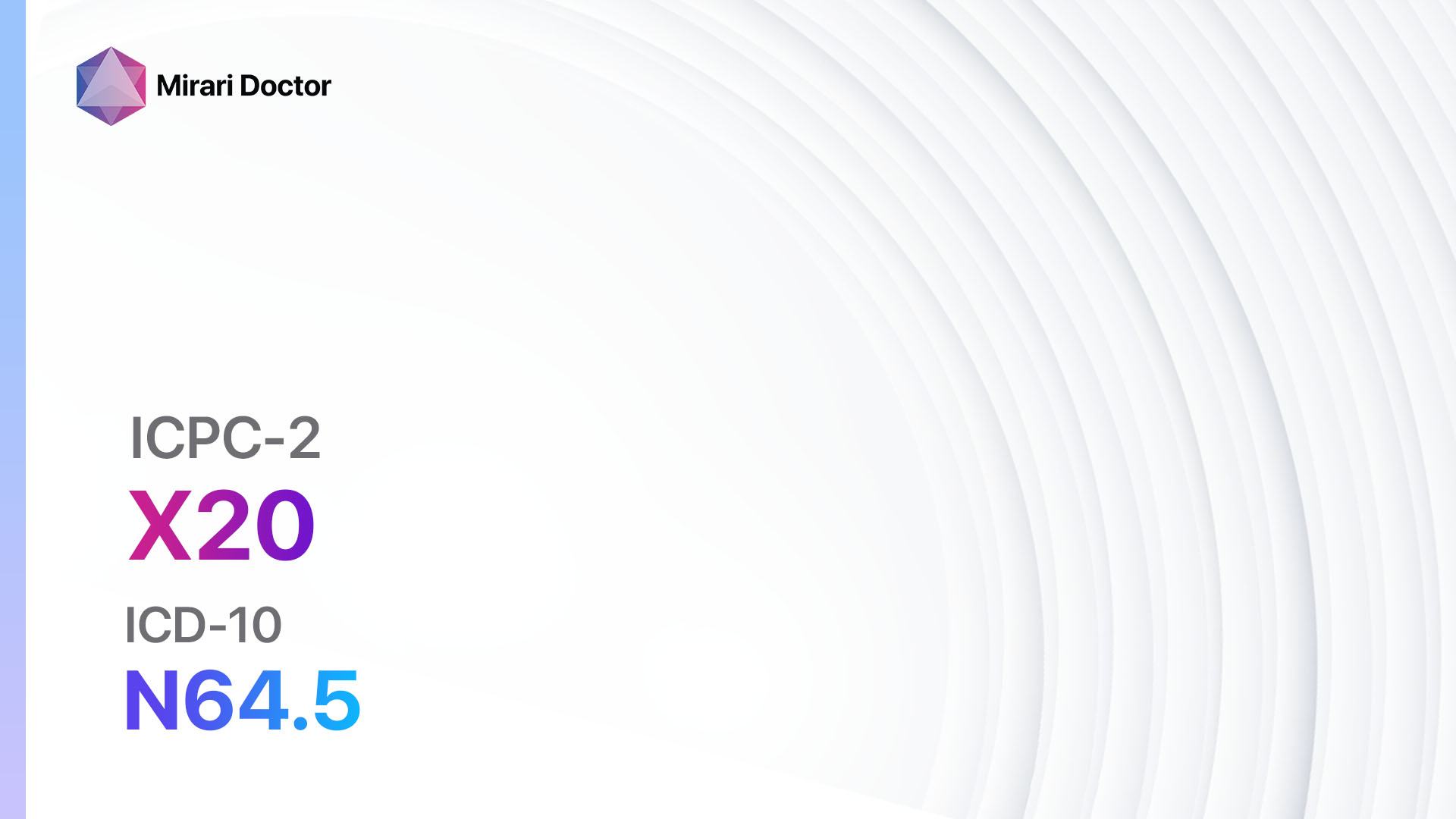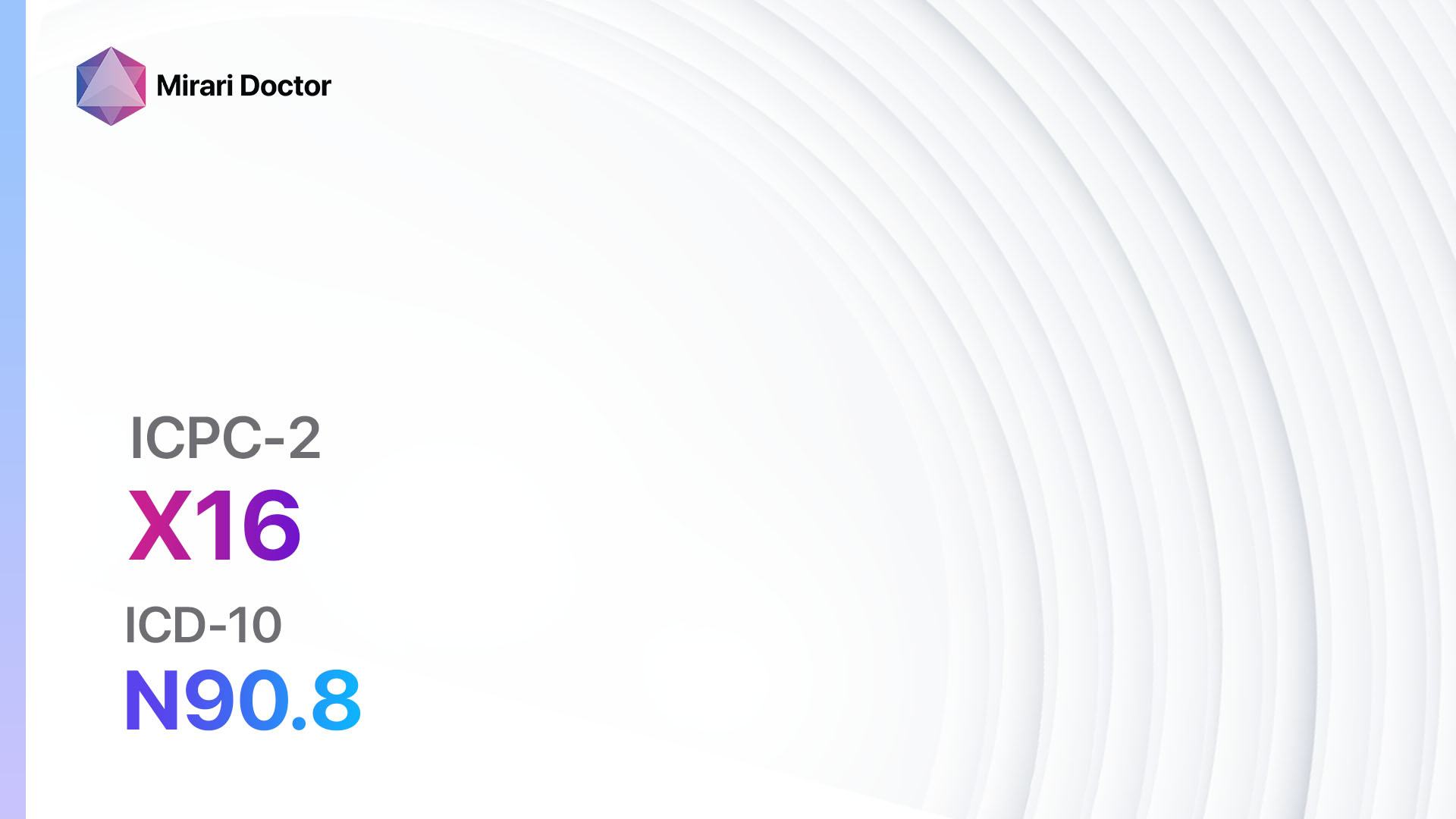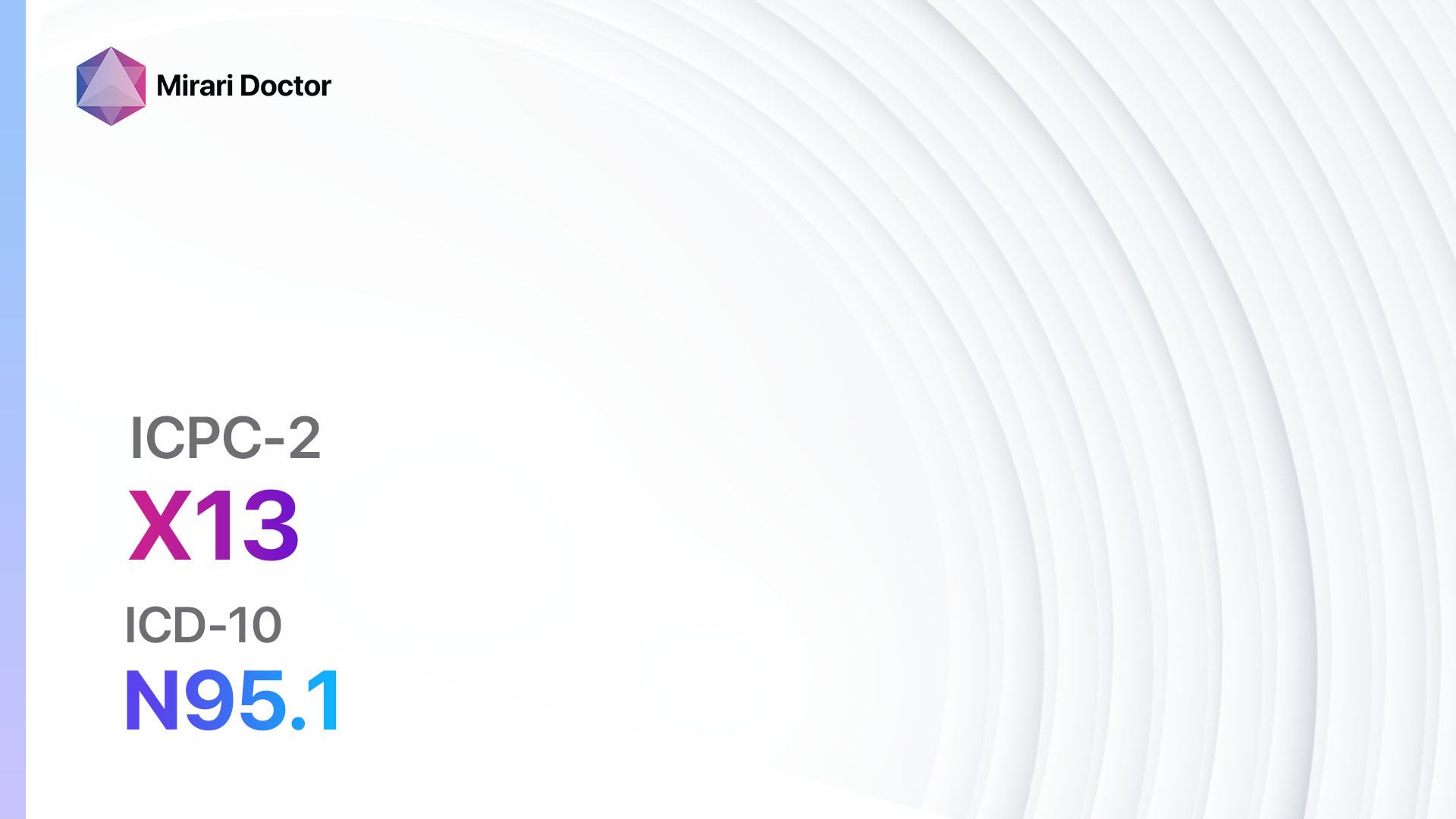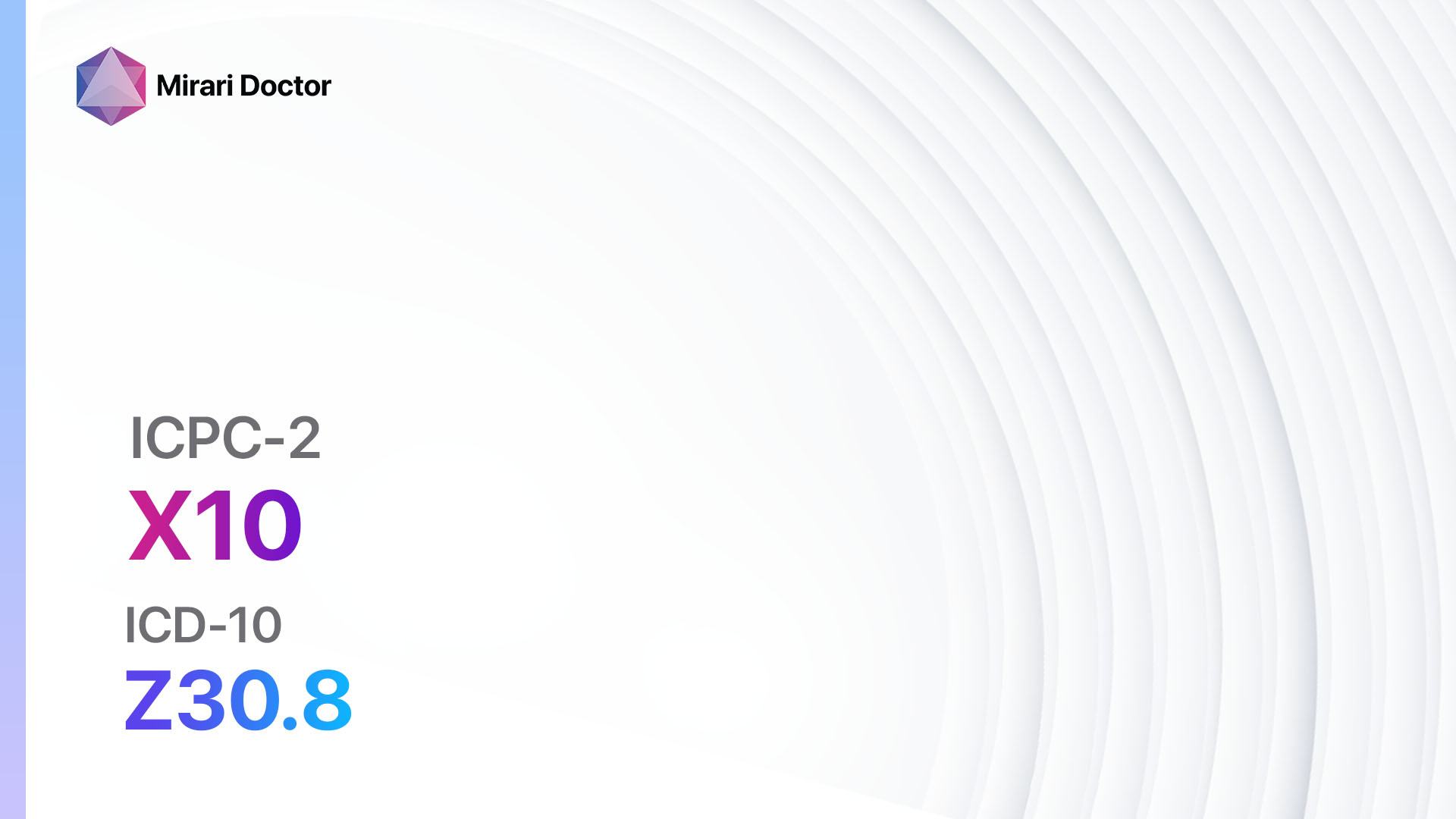
Introduction
Intermenstrual bleeding refers to bleeding or spotting that occurs between menstrual periods. It can be a concerning symptom for many women and may have various underlying causes[1]. This guide aims to provide healthcare professionals with a comprehensive approach to diagnosing and managing intermenstrual bleeding.
Codes
- ICPC-2 Code: X08 Intermenstrual bleeding[7]
- ICD-10 Code: N92.1 Excessive and frequent menstruation with irregular cycle[2][5]
Symptoms
- Irregular bleeding or spotting between menstrual periods
- Bleeding after sexual intercourse
- Abnormal vaginal discharge
- Pelvic pain or discomfort[3][4]
Causes
- Hormonal imbalances: Fluctuations in estrogen and progesterone levels can disrupt the normal menstrual cycle and lead to intermenstrual bleeding.
- Uterine or cervical abnormalities: Conditions such as polyps, fibroids, or cervical ectropion can cause bleeding between periods.
- Infections: Sexually transmitted infections (STIs) or other vaginal infections can result in intermenstrual bleeding.
- Contraceptive use: Certain forms of contraception, such as intrauterine devices (IUDs) or hormonal contraceptives, may cause irregular bleeding.
- Medications: Some medications, such as anticoagulants or certain antidepressants, can contribute to intermenstrual bleeding[1][6].
Diagnostic Steps
Medical History
- Gather information about the patient’s menstrual history, including the regularity of periods and any previous episodes of intermenstrual bleeding.
- Inquire about the presence of other symptoms, such as pelvic pain, abnormal vaginal discharge, or pain during sexual intercourse.
- Assess the patient’s contraceptive use and any recent changes in medication[3][4].
Physical Examination
- Perform a pelvic examination to assess the condition of the cervix, uterus, and ovaries.
- Look for any signs of infection, such as redness, swelling, or discharge.
- Palpate the abdomen to check for any abnormalities or tenderness[3].
Laboratory Tests
- Complete blood count (CBC): To evaluate for anemia or other blood disorders.
- Hormone levels: Measure levels of estrogen, progesterone, and other hormones to assess for hormonal imbalances.
- STI testing: Screen for common sexually transmitted infections, such as chlamydia or gonorrhea.
- Pap smear: To check for abnormal cervical cells or signs of cervical cancer[7].
Diagnostic Imaging
- Transvaginal ultrasound: This imaging modality can provide detailed images of the uterus, ovaries, and cervix to identify any structural abnormalities.
- Hysteroscopy: A thin, lighted tube is inserted through the cervix to visualize the inside of the uterus and identify any abnormalities[8].
Other Tests
- Endometrial biopsy: If other diagnostic tests are inconclusive, a small sample of the uterine lining may be taken for further evaluation.
- Coagulation studies: Assess the patient’s blood clotting function to rule out bleeding disorders[9].
Follow-up and Patient Education
- Schedule a follow-up appointment to discuss the results of the diagnostic tests and develop an appropriate treatment plan.
- Provide education on menstrual hygiene practices and the importance of regular gynecological check-ups.
- Address any concerns or questions the patient may have regarding their condition[10].
Possible Interventions
Traditional Interventions
Medications:
Top 5 drugs for intermenstrual bleeding:
- Combined oral contraceptives (e.g., ethinyl estradiol and levonorgestrel):
- Cost: $20-$50 per month.
- Contraindications: History of blood clots, certain types of cancer, uncontrolled high blood pressure.
- Side effects: Nausea, breast tenderness, breakthrough bleeding.
- Severe side effects: Blood clots, stroke, heart attack.
- Drug interactions: Certain antibiotics, anticonvulsants.
- Warning: Increased risk of blood clots in smokers and women over 35 years old.
- Progestin-only contraceptives (e.g., norethindrone):
- Cost: $15-$40 per month.
- Contraindications: History of blood clots, liver disease, unexplained vaginal bleeding.
- Side effects: Irregular bleeding, mood changes, weight gain.
- Severe side effects: Blood clots, ectopic pregnancy.
- Drug interactions: Certain anticonvulsants, St. John’s wort.
- Warning: Must be taken at the same time every day for maximum effectiveness.
- Nonsteroidal anti-inflammatory drugs (e.g., ibuprofen):
- Cost: $5-$15 per month.
- Contraindications: History of stomach ulcers, kidney disease, bleeding disorders.
- Side effects: Upset stomach, increased risk of bleeding.
- Severe side effects: Stomach bleeding, kidney problems.
- Drug interactions: Other NSAIDs, blood thinners.
- Warning: Long-term use can increase the risk of heart attack or stroke.
- Tranexamic acid:
- Cost: $50-$100 per month.
- Contraindications: History of blood clots, active intravascular clotting.
- Side effects: Upset stomach, muscle pain.
- Severe side effects: Blood clots, allergic reactions.
- Drug interactions: None reported.
- Warning: Should not be used in patients with a history of blood clots.
- Antibiotics (if an infection is present):
- Cost: Varies depending on the specific antibiotic.
- Contraindications: Known allergies to the antibiotic, certain medical conditions.
- Side effects: Nausea, diarrhea, allergic reactions.
- Severe side effects: Severe allergic reactions, antibiotic resistance.
- Drug interactions: Other medications that may interact with the specific antibiotic.
- Warning: Complete the full course of antibiotics as prescribed.
Alternative Drugs:
- Tranexamic acid mouthwash: Used for localized bleeding in the mouth or gums.
- Desmopressin: A synthetic hormone that can help reduce bleeding episodes.
- Danazol: A synthetic hormone that can regulate menstrual bleeding.
- Gonadotropin-releasing hormone agonists: Used to suppress hormone production and reduce bleeding.
Surgical Procedures:
- Dilation and curettage (D&C): A procedure to remove tissue from the uterus. Cost: $1,500-$5,000.
- Hysteroscopy with polypectomy: A minimally invasive procedure to remove uterine polyps. Cost: $2,000-$6,000.
Alternative Interventions
- Acupuncture: May help regulate hormonal imbalances and reduce intermenstrual bleeding. Cost: $60-$120 per session.
- Herbal supplements: Certain herbs, such as vitex agnus-castus or shepherd’s purse, may have potential benefits for menstrual regulation. Cost: Varies depending on the specific supplement.
- Stress reduction techniques: Stress can contribute to hormonal imbalances, so techniques such as yoga or meditation may help manage intermenstrual bleeding. Cost: Varies depending on the specific practice.
- Dietary modifications: A healthy diet rich in fruits, vegetables, and whole grains may help regulate hormonal levels. Cost: Varies depending on individual food choices.
- Lifestyle changes: Regular exercise, adequate sleep, and avoiding tobacco and excessive alcohol consumption can contribute to overall hormonal balance. Cost: Varies depending on individual choices.
Lifestyle Interventions
- Maintain a healthy weight: Excess weight can contribute to hormonal imbalances, so achieving and maintaining a healthy weight may help regulate menstrual cycles. Cost: Varies depending on individual choices.
- Practice stress management techniques: Chronic stress can disrupt hormonal balance, so incorporating stress reduction techniques such as yoga or meditation may be beneficial. Cost: Varies depending on the specific practice.
- Avoid tobacco and excessive alcohol consumption: Both tobacco and excessive alcohol intake can disrupt hormonal levels and contribute to intermenstrual bleeding. Cost: Varies depending on individual choices.
- Get regular exercise: Regular physical activity can help regulate hormonal levels and promote overall well-being. Cost: Varies depending on individual choices.
- Ensure adequate sleep: Poor sleep can disrupt hormonal balance, so prioritizing sufficient sleep may help regulate menstrual cycles. Cost: Varies depending on individual choices.
It is important to note that the cost ranges provided are approximate and may vary depending on the location and availability of the interventions. It is recommended to consult with a healthcare professional for personalized treatment options and cost estimates.
Mirari Cold Plasma Alternative Intervention
Understanding Mirari Cold Plasma
- Safe and Non-Invasive Treatment: Mirari Cold Plasma is a safe and non-invasive treatment option for various skin conditions. It does not require incisions, minimizing the risk of scarring, bleeding, or tissue damage.
- Efficient Extraction of Foreign Bodies: Mirari Cold Plasma facilitates the removal of foreign bodies from the skin by degrading and dissociating organic matter, allowing easier access and extraction.
- Pain Reduction and Comfort: Mirari Cold Plasma has a local analgesic effect, providing pain relief during the treatment, making it more comfortable for the patient.
- Reduced Risk of Infection: Mirari Cold Plasma has antimicrobial properties, effectively killing bacteria and reducing the risk of infection.
- Accelerated Healing and Minimal Scarring: Mirari Cold Plasma stimulates wound healing and tissue regeneration, reducing healing time and minimizing the formation of scars.
Mirari Cold Plasma Prescription
Video instructions for using Mirari Cold Plasma Device – X08 Intermenstrual bleeding (ICD-10:N92.1)
| Mild | Moderate | Severe |
| Mode setting: 1 (Infection) Location: 0 (Localized) Morning: 15 minutes, Evening: 15 minutes |
Mode setting: 1 (Infection) Location: 0 (Localized) Morning: 30 minutes, Lunch: 30 minutes, Evening: 30 minutes |
Mode setting: 1 (Infection) Location: 0 (Localized) Morning: 30 minutes, Lunch: 30 minutes, Evening: 30 minutes |
| Mode setting: 2 (Wound Healing) Location: 0 (Localized) Morning: 15 minutes, Evening: 15 minutes |
Mode setting: 2 (Wound Healing) Location: 0 (Localized) Morning: 30 minutes, Lunch: 30 minutes, Evening: 30 minutes |
Mode setting: 2 (Wound Healing) Location: 0 (Localized) Morning: 30 minutes, Lunch: 30 minutes, Evening: 30 minutes |
| Total Morning: 30 minutes approx. $5 USD, Evening: 30 minutes approx. $5 USD |
Total Morning: 60 minutes approx. $10 USD, Lunch: 60 minutes approx. $10 USD, Evening: 60 minutes approx. $10 USD, |
Total Morning: 60 minutes approx. $10 USD, Lunch: 60 minutes approx. $10 USD, Evening: 60 minutes approx. $10 USD, |
| Usual treatment for 7-60 days approx. $70 USD – $600 USD | Usual treatment for 6-8 weeks approx. $1,260 USD – $1,680 USD |
Usual treatment for 3-6 months approx. $2,700 USD – $5,400 USD
|
 |
|
Use the Mirari Cold Plasma device to treat Intermenstrual bleeding effectively.
WARNING: MIRARI COLD PLASMA IS DESIGNED FOR THE HUMAN BODY WITHOUT ANY ARTIFICIAL OR THIRD PARTY PRODUCTS. USE OF OTHER PRODUCTS IN COMBINATION WITH MIRARI COLD PLASMA MAY CAUSE UNPREDICTABLE EFFECTS, HARM OR INJURY. PLEASE CONSULT A MEDICAL PROFESSIONAL BEFORE COMBINING ANY OTHER PRODUCTS WITH USE OF MIRARI.
Step 1: Cleanse the Skin
- Start by cleaning the affected area of the skin with a gentle cleanser or mild soap and water. Gently pat the area dry with a clean towel.
Step 2: Prepare the Mirari Cold Plasma device
- Ensure that the Mirari Cold Plasma device is fully charged or has fresh batteries as per the manufacturer’s instructions. Make sure the device is clean and in good working condition.
- Switch on the Mirari device using the power button or by following the specific instructions provided with the device.
- Some Mirari devices may have adjustable settings for intensity or treatment duration. Follow the manufacturer’s instructions to select the appropriate settings based on your needs and the recommended guidelines.
Step 3: Apply the Device
- Place the Mirari device in direct contact with the affected area of the skin. Gently glide or hold the device over the skin surface, ensuring even coverage of the area experiencing.
- Slowly move the Mirari device in a circular motion or follow a specific pattern as indicated in the user manual. This helps ensure thorough treatment coverage.
Step 4: Monitor and Assess:
- Keep track of your progress and evaluate the effectiveness of the Mirari device in managing your Intermenstrual bleeding. If you have any concerns or notice any adverse reactions, consult with your health care professional.
Note
This guide is for informational purposes only and should not replace the advice of a medical professional. Always consult with your healthcare provider or a qualified medical professional for personal advice, diagnosis, or treatment. Do not solely rely on the information presented here for decisions about your health. Use of this information is at your own risk. The authors of this guide, nor any associated entities or platforms, are not responsible for any potential adverse effects or outcomes based on the content.
Mirari Cold Plasma System Disclaimer
- Purpose: The Mirari Cold Plasma System is a Class 2 medical device designed for use by trained healthcare professionals. It is registered for use in Thailand and Vietnam. It is not intended for use outside of these locations.
- Informational Use: The content and information provided with the device are for educational and informational purposes only. They are not a substitute for professional medical advice or care.
- Variable Outcomes: While the device is approved for specific uses, individual outcomes can differ. We do not assert or guarantee specific medical outcomes.
- Consultation: Prior to utilizing the device or making decisions based on its content, it is essential to consult with a Certified Mirari Tele-Therapist and your medical healthcare provider regarding specific protocols.
- Liability: By using this device, users are acknowledging and accepting all potential risks. Neither the manufacturer nor the distributor will be held accountable for any adverse reactions, injuries, or damages stemming from its use.
- Geographical Availability: This device has received approval for designated purposes by the Thai and Vietnam FDA. As of now, outside of Thailand and Vietnam, the Mirari Cold Plasma System is not available for purchase or use.
References
- MyDynamics. (n.d.). 10 common causes of Intermenstrual bleeding (IMB). Retrieved from https://www.mydynamics.co.za/health_post/intermenstrual-bleeding/
- Gesund.bund.de. (n.d.). ICD-10 code: N92.1 Excessive and frequent menstruation with irregular cycle. Retrieved from https://gesund.bund.de/en/icd-code-search/n92-1
- Medicover Hospitals. (n.d.). Intermenstrual Bleeding – Causes, Preventions, Treatment. Retrieved from https://www.medicoverhospitals.in/symptoms/intermenstrual-bleeding
- Healthline. (n.d.). Vaginal Bleeding Between Periods: Causes, Prevention & Diagnosis. Retrieved from https://www.healthline.com/health/vaginal-bleeding-between-periods
- ICD10Data.com. (n.d.). 2024 ICD-10-CM Diagnosis Code N92.1. Retrieved from https://www.icd10data.com/ICD10CM/Codes/N00-N99/N80-N98/N92-/N92.1
- NHS. (n.d.). What causes bleeding between periods? Retrieved from https://www.nhs.uk/common-health-questions/sexual-health/what-causes-bleeding-between-periods/
- RxReasoner. (n.d.). ICPC-2 Code: X08 Intermenstrual bleeding. Retrieved from https://www.rxreasoner.com/icpc2codes/X08
- American College of Obstetricians and Gynecologists. (2021). Abnormal Uterine Bleeding. Retrieved from https://www.acog.org/womens-health/faqs/abnormal-uterine-bleeding
- Mayo Clinic. (2021). Vaginal bleeding. Retrieved from https://www.mayoclinic.org/symptoms/vaginal-bleeding/basics/definition/sym-20050756
- Cleveland Clinic. (2021). Abnormal Uterine Bleeding. Retrieved from https://my.clevelandclinic.org/health/diseases/14633-abnormal-uterine-bleeding
Related articles
Made in USA














